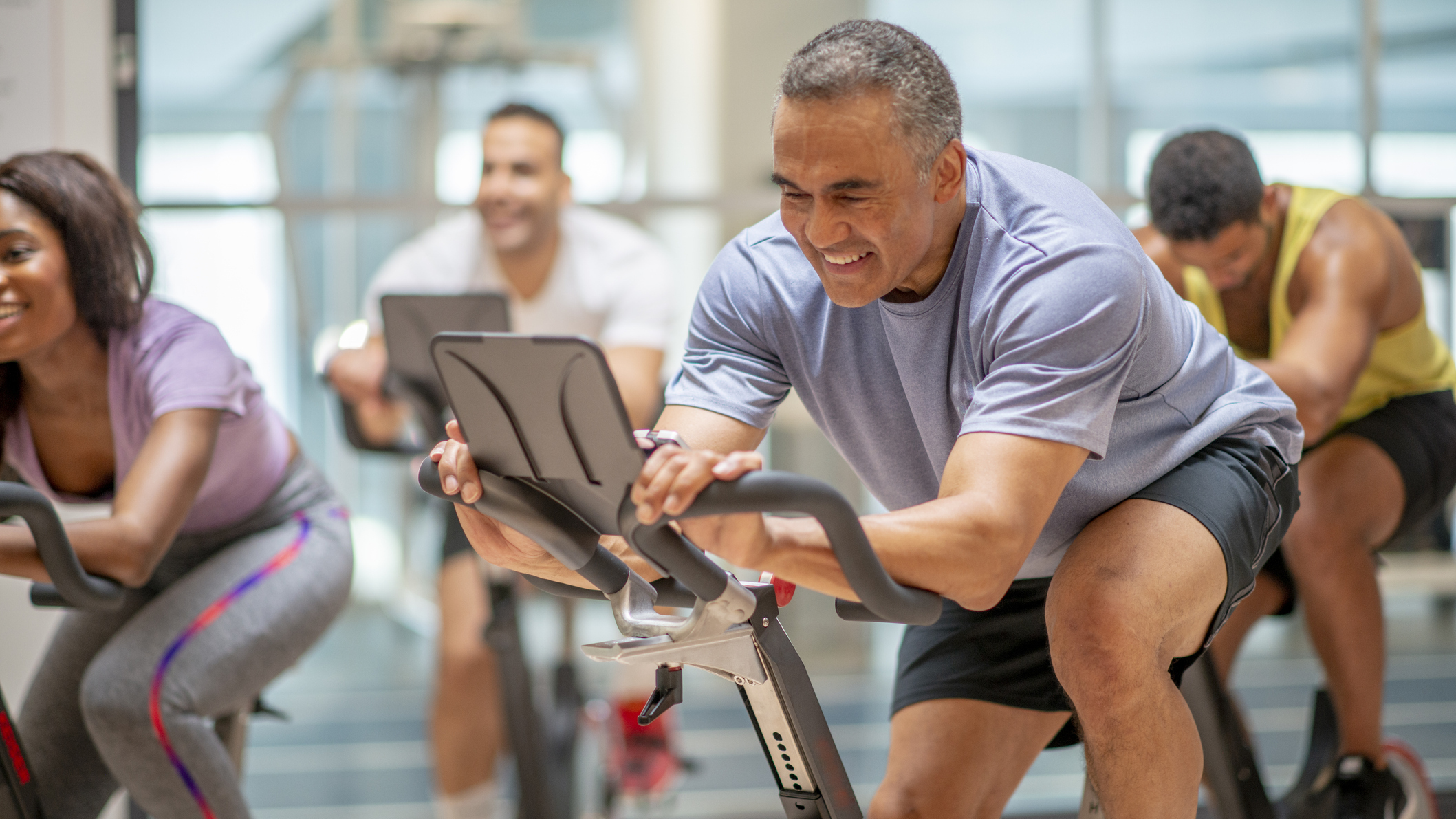A new study says indoor cycling is more effective than physio to treat hip pain—here’s the exact plan the participants followed
And it takes less than an hour a week

Hip pain is one of the leading causes of disability in older people, with 3.2 million suffering from hip osteoarthritis (OA) in the UK alone, but a new study suggests static cycling could be an effective remedy.
Researchers from Bournemouth University and University Hospitals Dorset NHS Foundation Trust found 30 minutes of group indoor cycling, coupled with a 30-minute education session with a physio was more effective at treating hip pain, and particularly hip OA, than regular physiotherapy.
The CHAIN (Cycling against Hip pAIN) intervention was launched in 2013 by Professor Robert Middleton and Professor Thomas Wainwright of the Orthopaedic Research Institute at Bournemouth University.
“Many people think, ‘My hip’s painful, I shouldn’t move it’,” Wainwright tells Fit&Well. “If they don’t move it, it becomes stiffer and therefore more painful. We wanted to get across to the participants that movement helps, but only if you do the right kind and amount of movement.”
Cycling, which loads the hip joint in a different way than walking or running, has always proven an effective exercise following hip replacement.
“Static cycling is safe, inclusive and really accessible,” says Wainwright. “It requires very low skill acquisition. It provides a cardiovascular workout for your heart and lungs. It’s low impact, it helps to mobilize the stiff joint and strengthen muscles around the hip.”
Encouraging regular and long-term adherence to exercise was also critical to the intervention’s success.
Start your week with achievable workout ideas, health tips and wellbeing advice in your inbox.
“One of the key parts of this study was partnering with a local leisure centre,” Wainwright continues. “We wanted to go from treatment to promoting self-management.
“Doing it in a group is also helpful. You get the positive benefit and esprit de corps of working in a group that will give you the confidence to keep going.
“We know arthritis responds well to exercise. Where there has been a gap previously is what kind of exercise is best, how much, and what type and setting? I think our study provides an intervention that can help those with hip OA in particular.”
Bournemouth University has since rolled out a virtual course via a free app, allowing patients to follow the intervention programme at home or in a gym using a static bike with a resistance dial on the crossbar.
The eight workouts and education sessions are also available on YouTube as a playlist.
The first workout talks you through how to set up a group indoor cycling bike. After a 10-minute warm-up, the session begins with a four-minute where you gently increase the resistance every minute. After a period of recovery, you increase your speed for 30 seconds, then recover for a minute, and repeat that multiple times as directed by the trainer, before gradually cooling down on the bike and finishing with some stretching.
Here’s the first workout in a follow-along format.
All of the education sessions are also available via the app and on YouTube. The thrust of the first two education sessions is that you can manage symptoms of arthritis and joint pain, and that movement is good for osteoarthritis.
“Most of our patients that get on the bike in the first exercise session find their hip might feel stiff and slightly painful to start with,” says Wainwright.
“But if you work through that first few minutes [your hip] becomes looser and feels a lot better. It’s quite striking that three or four weeks down the line patients will come back saying they can now put their shoes and socks on and bend down [without pain].
“So don’t assume hip pain is going to get worse and you’re going to need a joint replacement—it’s quite life-changing that simple things can make a big difference.”

Sam Rider is an experienced freelance journalist, specialising in health, fitness and wellness. He is also a REPS level 3 qualified personal trainer.
You must confirm your public display name before commenting
Please logout and then login again, you will then be prompted to enter your display name.


